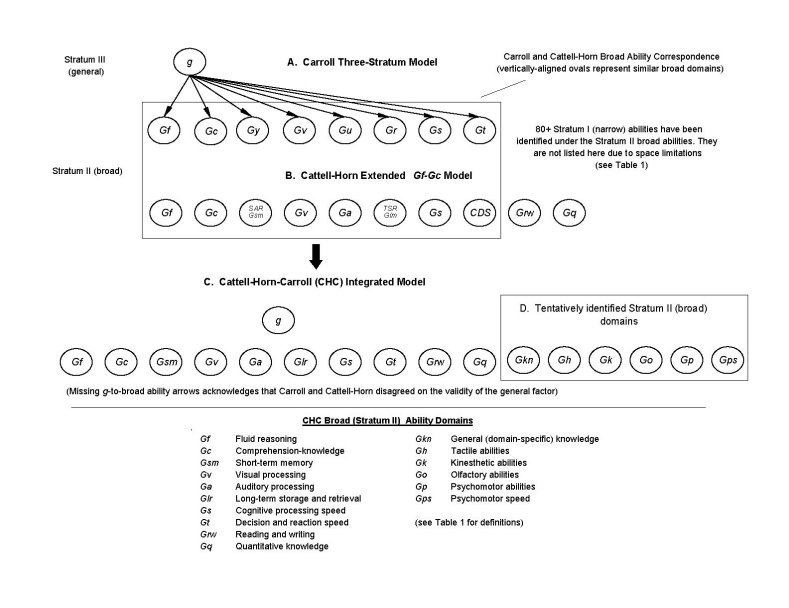The Cattell-Horn-Carroll
theory of cognitive abilities (CHC; Carroll, 1993; Cattell
& Horn) is a hierarchical model of intelligence that combines
the Cattell- Horn Gf-Gc (1987) and the Carroll tri- stratum models
(1993) of human cognitive abilities (see McGrew, 2005
, 2009
). Carroll expanded on the Cattell- Horn Gf- Gc theory
and proposed a three-stratum model that contains over 70
narrow or specific abilities at stratum one, eight
primary second-order abilities at stratum two, and an
overall g
ability (general intelligence) at stratum
three. The primary broad CHC abilities that relate to the
content of contemporary intelligence batteries include fluid
reasoning or intelligence (Gf), comprehension- knowledge or
crystallized intelligence (Gc), visual- spatial ability (Gv),
long-term storage and retrieval (Glr), auditory processing (Ga),
cognitive processing speed (Gs), short-term memory (Gsm), and
quantitative reasoning (Gq). Definitions of these broad
CHC abilities, the narrow abilities subsumed under each domain, as
well as additional abilities (e.g., tactile abilities—Gh) now
being considered part of a more comprehensive CHC human ability
model, are
available here. An visual-graphic overview
of the evolution of the CHC model, and its current status, is
presented below (from McGrew, 2009) |
|
|
|
|
|
|
|
|
|
|
|
|
|
 1. Introduction
1. Introduction

